Optimal T
What does testosterone do?
Increase muscle mass
Decrease body fat
Improve heart health
Strengthen erection
What man ever wanted an average amount of muscle, an average percentage of body fat, an average heart or an average erection?
No. Man. Ever.
So guys, do you want normal T or optimal T?
You want optimal T.
How can you achieve optimal T?
- Take the Low T Questionnaire, ten questions assessing for symptoms of testosterone deficiency.
- If the questionnaire is positive, get your testosterone measured.
- If your testosterone is sub-optimal, explore strategies to optimize your T.
Easy.
Low T Questionnaire
Adapted from Androgen Deficiency in the Aging Male [ADAM]
Answer Yes or No:
- Do you have a decrease in libido (sex drive)?
- Do you have a lack of energy?
- Do you have a decrease in strength and/or endurance?
- Have you lost height?
- Have you noticed a decreased "enjoyment in life"?
- Are you sad and/or grumpy?
- Are your erections less strong?
- Have you noticed a recent deterioration in your performance at the gym?
- Are you falling asleep after dinner?
- Has there been a recent deterioration in your work performance?
If you answered "Yes" to questions 1 or 7 or if you answered "Yes" to three or more questions, you may have low testosterone. Get your level checked!
Measure Your T
So, you suspect you have low T. You're not alone! It's estimated that about 13 million American men suffer from low T, yet 10% or less of these men seek treatment.
The only way to know for certain is to measure your T, a blood test that should be performed between 7-11AM, when blood levels are highest.
Order the correct tests
If your physician isn't experienced in hormone optimization, he or she may not order all of the necessary tests. Remember, testosterone doesn't exist in isolation in the body; rather, testosterone is one of many sex hormones that exist in delicate biochemical balance.
The complete panel should include:
- Testosterone, Total and Free: How much of your testosterone is free or available to interact with testosterone receptors? The majority of testosterone is bound to proteins in the blood. While bound, testosterone is unable to interact with the testosterone receptor. Measuring both the total and free levels will give a better assessment of testosterone bioavailability.
- Sex Hormone Binding Globulin [SHBG]: SHBG is a protein that binds to testosterone (and other sex hormones, like estrogen). The more SHBG, the more testosterone that is protein bound and the less testosterone is able to stimulate the testosterone receptor. The amount of this protein determines how much testosterone is bound vs free.
- Estradiol & Estrone: These are two forms of estrogen in the body. For some men, especially overweight men, low testosterone may not be due to lack of testosterone production, but rather excessive conversion of testosterone into estrogen. Giving testosterone to these men will only worsen their situation. Anastrozole is a prescription medication that blocks conversion of testosterone to estrogen.
- Lutenizing Hormone [LH]: LH is the signal the brain sends to the testicles to stimulate production of testosterone. hCG [Human Chorionic Gonadotropin] is a prescription medication that mimics lutenizing hormone.
- Hematocrit: Testosterone produces an anabolic effect on the bone marrow resulting in increased production of red blood cells. Hematocrit is a measure of the "thickness" of blood, the relative proportion of red blood cells to liquid plasma. If this level goes too high, there is a risk of blood clots; blood donation (phlebotomy) or holding testosterone replacement therapy should be considered until hematocrit returns to the normal range.
- Prostatic Specific Antigen [PSA]: PSA is a protein found in cells of the prostate. This value is most relevant for men over 50 who are at increased risk of enlarged prostate [BPH] and prostate cancer.
Interpret Your Results
What's your T?
600? 180? 290?
What's normal?
There is a large normal range for total testosterone: 250-1100 ng/dL.
Why such a big range?
For starters, different labs have different parameters for normal. This means that Quest and LabCorp have different ranges for what's considered a normal testosterone level.
Also, these ranges are not adjusted for the age of the client. This means that a lab will judge the testosterone levels of a 70 year old and a 20 year old by the same metrics. This simply doesn't make sense. Testosterone levels peak at the age of 30, after which levels decrease by 1% per year thereafter.
So, if you have a total testosterone of 315 ng/mL but have a low sex drive, low energy and loss of muscle mass, is your testosterone level really normal? No. Symptoms of testosterone deficiency trump a low normal lab value.
Optimal T for any man is 700-1100 ng/dL
If your T isn't in this range, you're losing out on the benefits of testosterone. Schedule a consultation to review options for optimizing your T.
Call: 646.568.6636
Email: services@DoctorK.nyc
Resources
Campbell, Jay. "The Definitive Testosterone Replacement Therapy Manual" 2015.
Crisler, John. "Testosterone Replacement Therapy" 2014.
Bendre, Sachin V. et al. "Clomiphene Citrate Effectively Increases Testosterone in Obese, Young, Hypogonadal Men" Reprod Syst Ex Disord. 2015 Dec; 4(4): 155.
Kim ED et al. "Oral enclomiphene citrate raises testosterone and preserves sperm counts in obese hypogonadal men, unlike topical testosterone: restoration instead of replacement" BJU Int. 2016 Apr;117(4):677-85.
Kovac, Jason R. "Reproductive endocrinology: Oral enclomiphene citrate in obese men with hypogonadism" Nature Reviews Urology 13, 133–134 (2016)
Mihalca R and S Fica. "The impact of obesity on the male reproductive axis" J Med Life. 2014 Jun 15; 7(2): 296–300.
Schulster, Michael et al. "The role of estradiol in male reproductive function" Asian J Androl. 2016 May-Jun; 18(3): 435–440.
Tan RB et al. "Clinical Use of Aromatase Inhibitors in Adult Males." Sex Med Rev. 2014 Apr;2(2):79-90.
Vergel, Nelson. "Testosterone: A Man's Guide" 2011.
